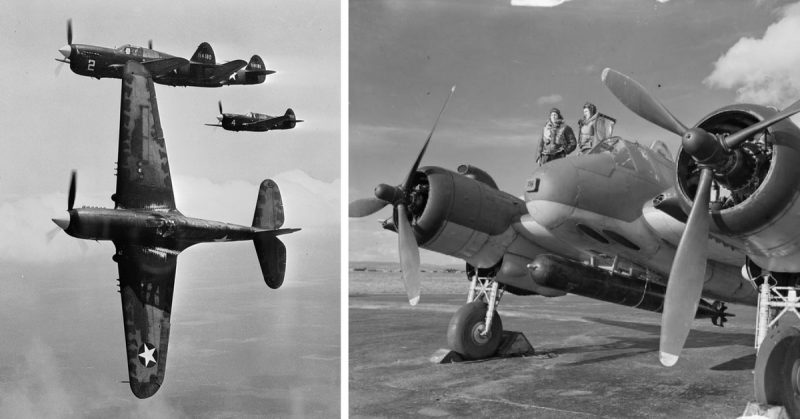Boulton Paul Defiant
A two-seater British plane, all of the Defiant’s firepower lay with the rear gunner. It performed well in the Battle of France but was no match for the Luftwaffe’s superior planes in a dogfight. Fitted with secret airborne interception radar, it became a night fighter and a vital tool in the Battle of Britain.
Bristol Beaufighter
The RAF fielded the world’s first purpose-built high-performance night fighter, the Beau. At first, many had only cannons, machine-guns being reserved for other planes. Day fighting versions served in Malta and North Africa.
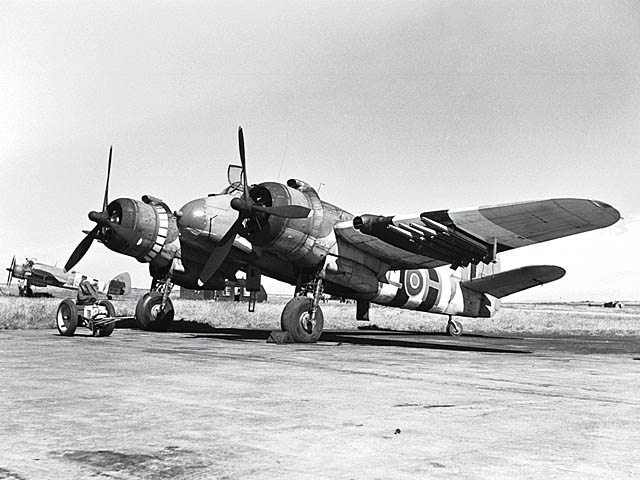
Commonwealth Boomerang
In December 1941, Australia suddenly came under threat from the Japanese. In just three months, a prototype was produced for a plane to defend against Japanese air attacks. First flown in action in 1943, the Boomerang was robust, agile, and well-armed.
Curtiss P-40 Warhawk
A leading American fighter during the early war, the Warhawk was an improvement on previous Curtiss models, due to its powerful Allison engine. Despite being quickly surpassed by other planes, it served a valuable role in North Africa and China.
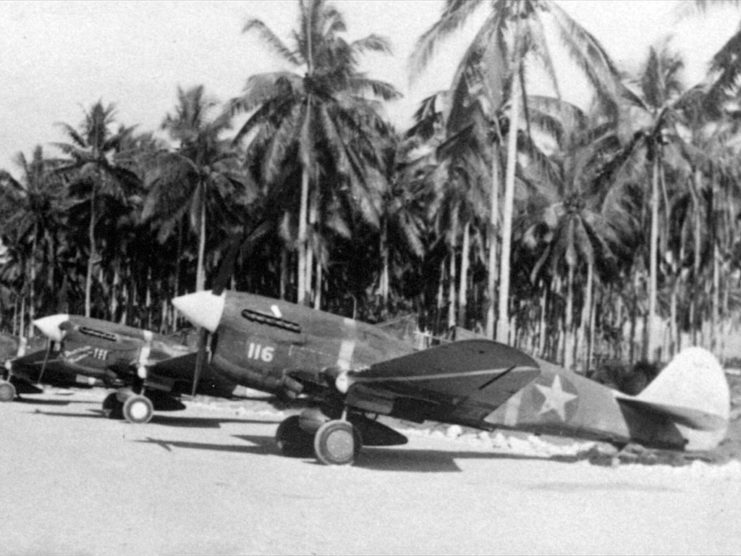
Dornier Do 217
Derived from the earlier Do 17, the 217 provided the Axis with night-time firepower during the middle years of the war. With radar targeting and both fighter and bomber capabilities, it was a flexible weapon. Hauptmann Hans Krause earned the Iron Cross after destroying 12 Allied planes while flying one.
Focke-Wulf Fw190
When it entered service in September 1941, this fighter was faster than and more maneuverable than the opposing Spitfires. Over the war years, both planes went through different models, the Spitfire sometimes overtaking the Fw190. The Fw190 remained the best Luftwaffe aircraft of the war.
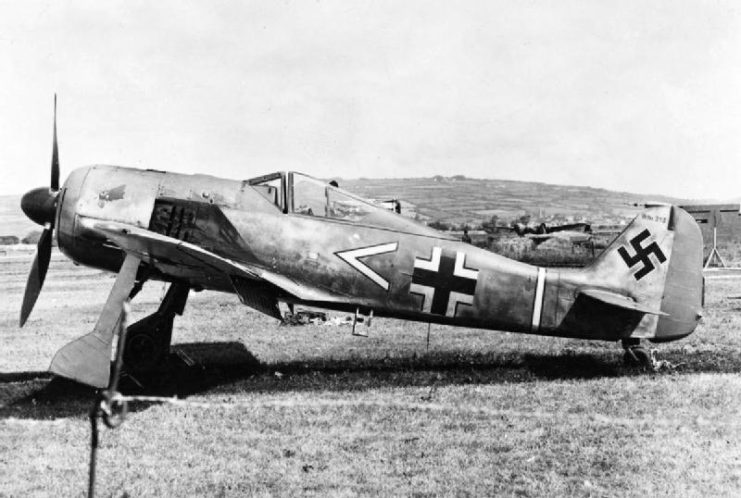
Grumman F6F Hellcat
The Hellcat was the plane that won the air war in the Pacific. It first entered combat in August 1942. Four months later, in its first major air battle, Hellcats destroyed 28 Japanese A6M Zeros while losing only two of their own. Effective in combat at any altitude, the plane was flown by the most American air aces of all time, with 307 pilots reaching ace status while fighting with it.
Kawasaki Ki-45 Toryu
A fast and maneuverable twin-engine fighter, the Toryu’s name means Dragon Slayer. It lived up to it, causing havoc among American bombers and escorts.
The first kamikaze attacks against Allied ships were carried out by four Ki-45s in May 1944, when the pilots turned their planes into bombs on suicide missions.
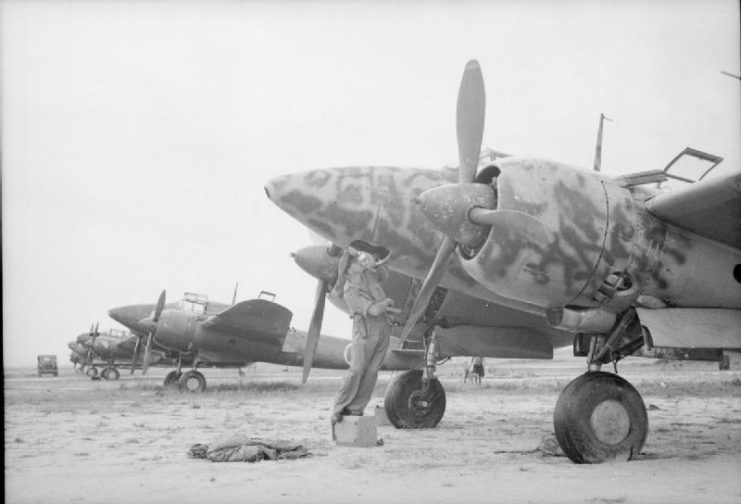
Macchi C.202 Folgore
The best Italian fighter aircraft of the war, the Folgore, meaning Thunderbolt, was powered by a German Daimler-Benz DB 601 engine. When supplies of them ran out, the Italians produced their own version under license.
The Folgore served in North Africa to great effect. It was superior to both the American Curtiss P-40 and the British Hawker Hurricane. Only the Spitfire and the P-51 Mustang proved better.
Messerschmitt Bf109
For enduring performance in the air, no plane of WWII could outclass the Bf109. It first saw service during the Spanish Civil War in 1937 and was still being used in the mid-1950s.
The Bf109 was superior to almost everything flown against it during the first half of the war. Its weapons had a longer range and packed a more powerful punch than the Spitfire and Hurricanes it faced in the Battle of Britain, although in other ways the Spitfire outmatched it.
Messerschmitt Me262
The Me262 was the first ever operational jet fighter. It was a weapon with which Hitler expected to win the war.
Developed during the war, the Me262 first entered service in July 1944. Knowing the Germans were working on rocket technology, the Allies had repeatedly bombed research and production facilities, setting back its appearance. Fewer than 300 engaged in battle, and there was a problem with its engine. However, with a speed that vastly outstripped propeller-driven fighters, it was a terrifying sight to behold.
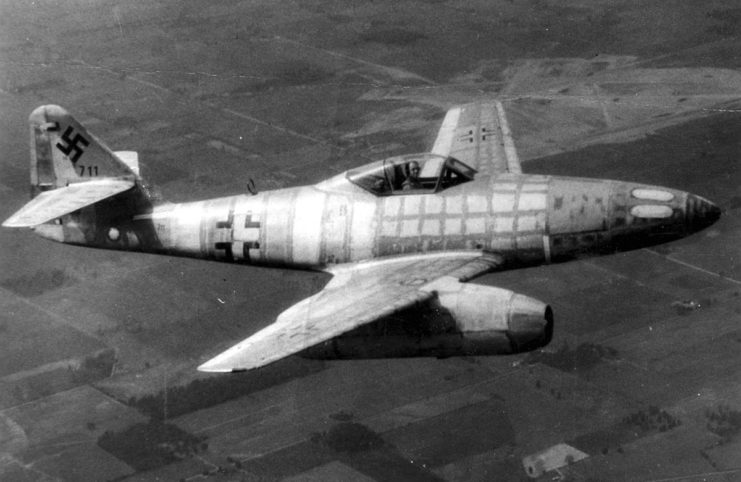
Mitsubishi A6M Zero-Sen
Japan’s most famous plane, it was the first ship-based fighter that could beat land-based opponents. With its light frame and powerful engine, it at first out-manoeuvred and out-fought everything the Allies flew against it.
The tide turned when the Americans shipped some Zeros home for study, determining their weaknesses. Paired with the arrival of a new generation of Allied planes, Zeros then dropped like flies. They were the principal suicide bomb planes of the late war kamikaze attacks.
Republic P-47 Thunderbolt
The largest and heaviest single-seat piston fighter ever made, the Thunderbolt first flew in 1941. It was one of the best American fighters of the war and the most produced one.
The Thunderbolt had several innovations, including a technically sophisticated turbocharger, cabin air-conditioning, electric indicators for fuel, and variable gun-bay heating. Surprisingly agile despite its size, it carried droppable extra fuel tanks for long range missions.
As well as an excellent escort and intercept plane, the Thunderbolt worked well in ground attacks, strafing enemy forces.
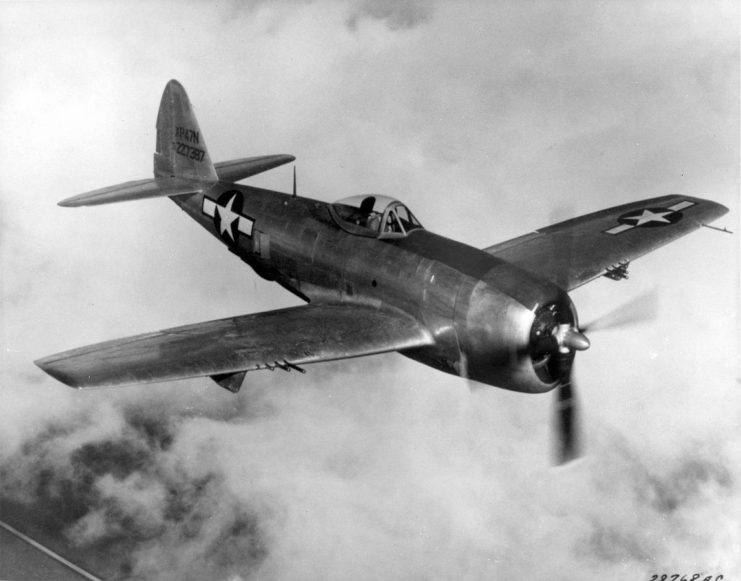
Petlyakov Pe-3
This Russian aircraft had an unusual design history. Originally intended as an interceptor, it was redesigned to be a high-performing dive-bomber before being redesigned again as a fighter. Fast-moving and able to perform well at high altitudes, the Pe-3 was an excellent interceptor: its heavy weapons allowed it to pack a powerful punch.
Supermarine Spitfire
One of the most famous aircraft ever, the Spitfire was the symbol of British success during the Battle of Britain. With its powerful Rolls-Royce engine and heavy weaponry, it was maneuverable and hard enough hitting to challenge any Axis plane.
The Spitfire was repeatedly redesigned during the war, going from the Mk I to the Mk XV by 1944. In October 1944, a Mk KXIV shot down a Messerschmitt Me262, the first jet fighter to be brought down during the war.
Source:
Francis Crosby (2010), The Complete Guide to Fighters & Bombers of the World
